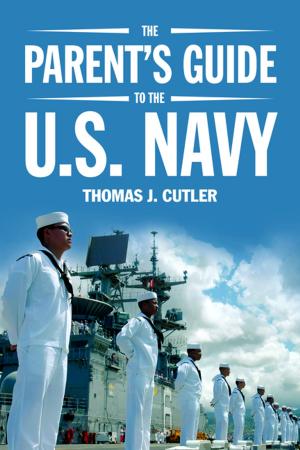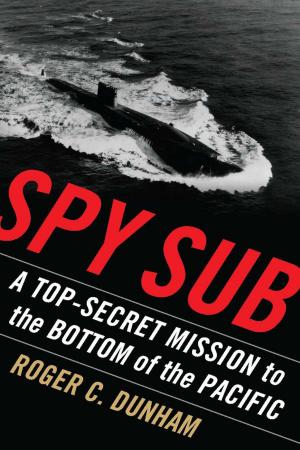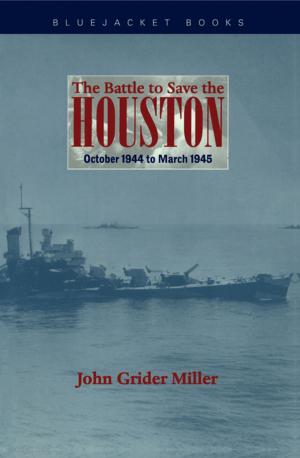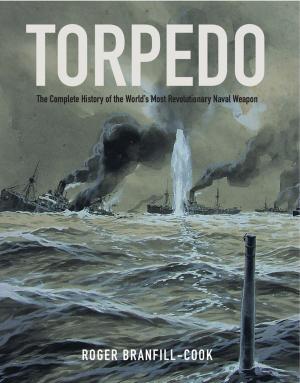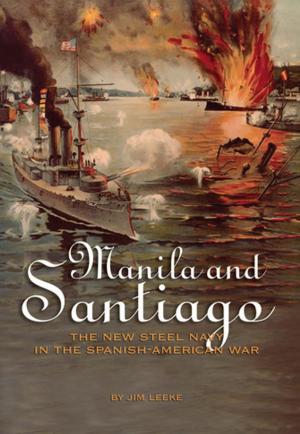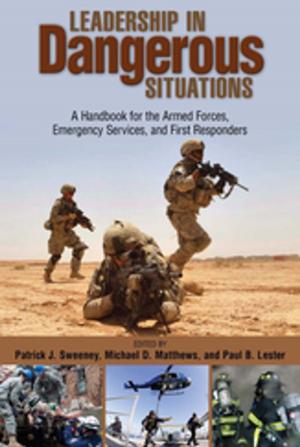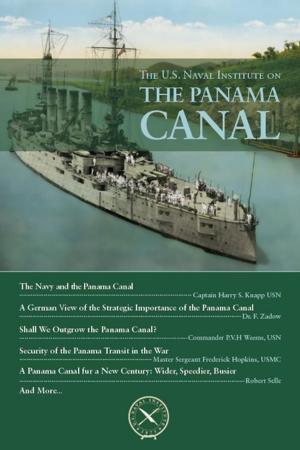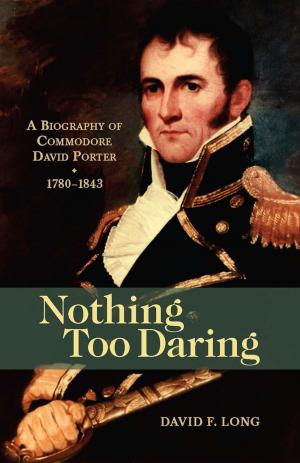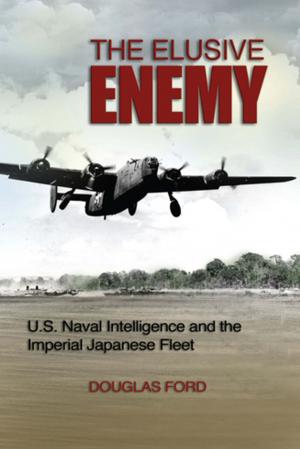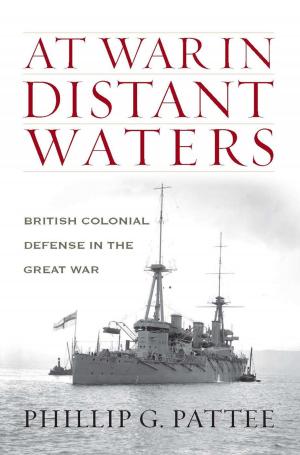Lion in the Bay
The British Invasion of the Chesapeake, 1813-14
Nonfiction, History, Modern, 19th Century| Author: | Stanley L. Quick | ISBN: | 9781612512372 |
| Publisher: | Naval Institute Press | Publication: | October 15, 2015 |
| Imprint: | Naval Institute Press | Language: | English |
| Author: | Stanley L. Quick |
| ISBN: | 9781612512372 |
| Publisher: | Naval Institute Press |
| Publication: | October 15, 2015 |
| Imprint: | Naval Institute Press |
| Language: | English |
This is the story of the War of 1812 like no other, brought to life in narrative form with pinpoint historical details.
As the War of 1812 raged on the high seas and along the Canadian border, the British decided to strike at the heart of the United States, the relatively undefended area of the Chesapeake Bay. The Chesapeake was a fertile farm region, a renowned place of shipbuilding and an area divided along political lines over the war. Admiral George Cockburn led the British into the bay in March 1813. After a failed attempt to take Norfolk, Cockburn led the British up and down the Chesapeake. Originally a campaign to relieve pressure from other fronts, the Chesapeake theater soon became a campaign of retribution for the British, turning what had been an economic engine for America into a region of terrorized citizens, destroyed farms and fears of slave insurrection. The blockade choked American commerce and prevented privateers from taking the war to the English. Cockburn returned in 1814 and once more terrorized the residents on both shores of the Chesapeake while stoking the political divisions that also rent the country.
In August, 1814, the British capitalized on the refusal of President James Madison to bolster the defenses of the waterway that led to the nation’s capital. Cockburn again led a naval force into the bay, but this time he ran into opposition from Commodore Joshua Barney and his polyglot flotilla of warships. Barney put up an heroic though doomed fight before the British landed at Benedict, Md., in August, 1814 and marched on Washington, D.C. After defeating the Americans at Bladensburg, the British burned Washington before returning to their boats and setting out for Baltimore. There, the British armada ran into Fort McHenry and a stalwart group of defenders. Despite a massive bombardment, the British could not silence the fort or the city’s other defenses, forcing them to retreat and give up their campaign to completely shut the Chesapeake. The victory at Baltimore, coupled with victories on the Great Lakes, helped turn the war in America’s favor.
As the War of 1812 raged on the high seas and along the Canadian border, the British decided to strike at the heart of the United States, the relatively undefended area of the Chesapeake Bay. The Chesapeake was a fertile farm region, a renowned place of shipbuilding and an area divided along political lines over the war. Admiral George Cockburn led the British into the bay in March 1813. After a failed attempt to take Norfolk, Cockburn led the British up and down the Chesapeake. Originally a campaign to relieve pressure from other fronts, the Chesapeake theater soon became a campaign of retribution for the British, turning what had been an economic engine for America into a region of terrorized citizens, destroyed farms and fears of slave insurrection. The blockade choked American commerce and prevented privateers from taking the war to the English. Cockburn returned in 1814 and once more terrorized the residents on both shores of the Chesapeake while stoking the political divisions that also rent the country.
In August, 1814, the British capitalized on the refusal of President James Madison to bolster the defenses of the waterway that led to the nation’s capital. Cockburn again led a naval force into the bay, but this time he ran into opposition from Commodore Joshua Barney and his polyglot flotilla of warships. Barney put up an heroic though doomed fight before the British landed at Benedict, Md., in August, 1814 and marched on Washington, D.C. After defeating the Americans at Bladensburg, the British burned Washington before returning to their boats and setting out for Baltimore. There, the British armada ran into Fort McHenry and a stalwart group of defenders. Despite a massive bombardment, the British could not silence the fort or the city’s other defenses, forcing them to retreat and give up their campaign to completely shut the Chesapeake. The victory at Baltimore, coupled with victories on the Great Lakes, helped turn the war in America’s favor.
This is the story of the War of 1812 like no other, brought to life in narrative form with pinpoint historical details.
As the War of 1812 raged on the high seas and along the Canadian border, the British decided to strike at the heart of the United States, the relatively undefended area of the Chesapeake Bay. The Chesapeake was a fertile farm region, a renowned place of shipbuilding and an area divided along political lines over the war. Admiral George Cockburn led the British into the bay in March 1813. After a failed attempt to take Norfolk, Cockburn led the British up and down the Chesapeake. Originally a campaign to relieve pressure from other fronts, the Chesapeake theater soon became a campaign of retribution for the British, turning what had been an economic engine for America into a region of terrorized citizens, destroyed farms and fears of slave insurrection. The blockade choked American commerce and prevented privateers from taking the war to the English. Cockburn returned in 1814 and once more terrorized the residents on both shores of the Chesapeake while stoking the political divisions that also rent the country.
In August, 1814, the British capitalized on the refusal of President James Madison to bolster the defenses of the waterway that led to the nation’s capital. Cockburn again led a naval force into the bay, but this time he ran into opposition from Commodore Joshua Barney and his polyglot flotilla of warships. Barney put up an heroic though doomed fight before the British landed at Benedict, Md., in August, 1814 and marched on Washington, D.C. After defeating the Americans at Bladensburg, the British burned Washington before returning to their boats and setting out for Baltimore. There, the British armada ran into Fort McHenry and a stalwart group of defenders. Despite a massive bombardment, the British could not silence the fort or the city’s other defenses, forcing them to retreat and give up their campaign to completely shut the Chesapeake. The victory at Baltimore, coupled with victories on the Great Lakes, helped turn the war in America’s favor.
As the War of 1812 raged on the high seas and along the Canadian border, the British decided to strike at the heart of the United States, the relatively undefended area of the Chesapeake Bay. The Chesapeake was a fertile farm region, a renowned place of shipbuilding and an area divided along political lines over the war. Admiral George Cockburn led the British into the bay in March 1813. After a failed attempt to take Norfolk, Cockburn led the British up and down the Chesapeake. Originally a campaign to relieve pressure from other fronts, the Chesapeake theater soon became a campaign of retribution for the British, turning what had been an economic engine for America into a region of terrorized citizens, destroyed farms and fears of slave insurrection. The blockade choked American commerce and prevented privateers from taking the war to the English. Cockburn returned in 1814 and once more terrorized the residents on both shores of the Chesapeake while stoking the political divisions that also rent the country.
In August, 1814, the British capitalized on the refusal of President James Madison to bolster the defenses of the waterway that led to the nation’s capital. Cockburn again led a naval force into the bay, but this time he ran into opposition from Commodore Joshua Barney and his polyglot flotilla of warships. Barney put up an heroic though doomed fight before the British landed at Benedict, Md., in August, 1814 and marched on Washington, D.C. After defeating the Americans at Bladensburg, the British burned Washington before returning to their boats and setting out for Baltimore. There, the British armada ran into Fort McHenry and a stalwart group of defenders. Despite a massive bombardment, the British could not silence the fort or the city’s other defenses, forcing them to retreat and give up their campaign to completely shut the Chesapeake. The victory at Baltimore, coupled with victories on the Great Lakes, helped turn the war in America’s favor.

